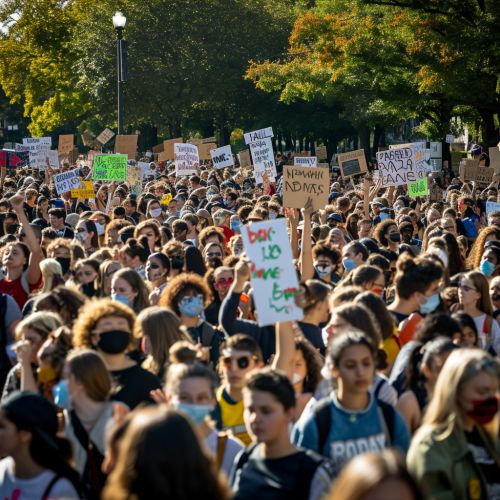Activism
Overview
Activism, in its broadest sense, refers to the practice of vigorous action or involvement as a means of achieving political or other goals, sometimes by demonstrations, protests, or campaigns. It is a form of political participation that goes beyond voting. Activism can be performed on a day-to-day basis in a wide variety of ways, including through the creation of art, computer hacking, or simply in how one chooses to spend their money.
History
The history of activism traces back to societies before the formation of the modern democratic system. In the Enlightenment period, the word activist was primarily used as an adjective to describe a person or thing that was characterized by action or activity. The term activism was coined much later, in the 20th century, to describe a range of political behaviors, including voting, nonviolent protest, and violent direct action.
Types of Activism
Activism can be categorized into different types based on the issues it addresses, the methods it employs, and the level at which it operates.
Social Activism
Social activism is the promotion and guidance used to cultivate changes in business practices, business ethics, and the government to influence social change. It is a broad type of activism that can involve efforts to change policies, standards, or behaviors related to a wide range of issues including education, healthcare, and civil rights.
Political Activism
Political activism involves efforts to promote, impede, or direct social, political, economic, or environmental reform with the desire to make changes in society toward a perceived greater good. This can involve a wide range of activities from writing letters to newspapers or politicians, political campaigning, economic activism such as boycotts or preferentially patronizing businesses, rallies, street marches, strikes, sit-ins, and hunger strikes.
Environmental Activism
Environmental activism is a broad term that can describe anything from peaceful protests and petitions to radical direct action. This form of activism is centered around the preservation, restoration, or improvement of the natural environment, and often involves issues related to conservation, sustainability, and climate change.
Methods of Activism
Activists employ a range of methods, or tactics, to achieve their goals. These methods can be peaceful or violent, legal or illegal, and can vary greatly in their effectiveness.
Direct Action
Direct action is a form of activism that involves immediate action to achieve a goal. This can include protests, strikes, sit-ins, or even forms of violent resistance. The aim of direct action is to either enact the desired change directly or to put pressure on those in power to make the change.
Lobbying
Lobbying is a form of activism where individuals or groups attempt to influence politicians or public officials to take a certain action or stance. This can be done through a variety of methods, including direct communication, campaign contributions, or public advocacy campaigns.
Community Organizing
Community organizing is a form of activism that focuses on mobilizing groups of people within a particular community or area. The goal of community organizing is often to empower individuals within a community to make changes on issues that affect them directly.
Impact of Activism
The impact of activism can be seen in a variety of ways. It can lead to changes in public policy, shifts in societal attitudes, and even transformations in the way that businesses operate. Activism can also have a significant impact on individuals, providing them with a sense of purpose, community, and empowerment.
Challenges in Activism
Despite its potential for positive change, activism also faces a number of challenges. These can include resistance from those in power, difficulty in mobilizing support, and the potential for burnout among activists. In addition, activists often face legal and physical risks, particularly in countries where freedom of speech and assembly are not guaranteed.
Activism in the Digital Age
The rise of the internet and social media has had a profound impact on activism. Digital tools have made it easier for activists to organize, communicate, and spread their message. However, they have also raised new challenges, such as the spread of misinformation and the risk of surveillance and repression by governments.
See Also


